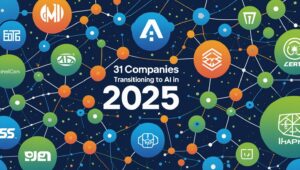11 Smart AI Apps That Are Helping Children With Their Assignments Around the World
11 Smart AI Apps That Are Helping Children
What if your child could ask their homework questions and an app would not only answer but teach them — with pictures, steps, and even a voice that talks like a real teacher?
That’s exactly what these AI-powered apps are doing for kids around the world — from Nigeria to the United States, India, the UK, and beyond.
Let’s explore the top 11 apps and websites that are helping students learn smarter — not just faster.
1. Khan Academy + Khan Academy Kids
🎯 What it does:
Teaches kids everything from math and science to reading and grammar — step-by-step with videos, interactive games, and a friendly interface. Their new AI tool, Khanmigo, can chat with learners like a real teacher.
👨👩👧👦 Who uses it:
Parents, teachers, and students aged 3 to 18.
🌍 Where it’s used:
Over 140 million learners globally. Popular in the US, India, Nigeria, and Kenya, especially for schools with limited resources.
2. Duolingo
🎯 What it does:
Teaches children new languages like English, Spanish, French, and even Math — through fun, game-like lessons and friendly voices.
👨👩👧👦 Who uses it:
Kids aged 6+, teens, and adults too!
🌍 Where it’s used:
Used in over 190 countries, with 130 million monthly users — especially common in schools in Europe, South America, Africa, and Southeast Asia.
3. Photomath
🎯 What it does:
Take a photo of a math problem, and it solves it with clear steps, diagrams, and explanations.
👨👩👧👦 Who uses it:
Students aged 9+, high school learners, and even parents helping with math.
🌍 Where it’s used:
Popular in the US, India, Nigeria, the UK, and Brazil. Over 100 million installs worldwide.
4. ChatGPT (with Voice)
🎯 What it does:
A super-smart chatbot that children can talk to or type into. It gives full explanations in easy words — and can even show diagrams or create quizzes.
👨👩👧👦 Who uses it:
Kids (with guidance), teens, university students, and even teachers.
🌍 Where it’s used:
Used worldwide — in schools, homes, and tutoring centers across Africa, Europe, North America, and Asia.
5. Socratic by Google
🎯 What it does:
Take a picture of a question, and it finds the best explanation — with videos, images, and definitions from top education sites.
👨👩👧👦 Who uses it:
Students aged 10+, especially in junior and senior secondary school.
🌍 Where it’s used:
Popular in the US, UK, Philippines, Nigeria, and India.
6. Read Along by Google
🎯 What it does:
Listens as children read stories aloud and gives spoken feedback to improve their reading skills.
👨👩👧👦 Who uses it:
Kids aged 4 to 8, especially early readers.
🌍 Where it’s used:
Used in rural and urban schools across Africa, Asia, and Latin America where reading support is needed.
7. IXL
🎯 What it does:
Offers practice in Math, English, Science, and more — with instant feedback and clear, written explanations.
👨👩👧👦 Who uses it:
Students from Kindergarten to Year 12.
🌍 Where it’s used:
Very popular in the United States, Canada, Australia, and South Africa.
8. Brainly
🎯 What it does:
A social homework community where students ask questions and get answers from other students or verified tutors.
👨👩👧👦 Who uses it:
Teenagers and senior secondary school students.
🌍 Where it’s used:
Widely used in Nigeria, Indonesia, India, the Philippines, and the US.
9. Quizziz
🎯 What it does:
Turns homework and lessons into fun quizzes and games — with explanations after each question.
👨👩👧👦 Who uses it:
Teachers and students aged 7 to 18.
🌍 Where it’s used:
Used by teachers in over 150 countries, including Ghana, Pakistan, UK, and Mexico.
10. Google Assistant + YouTube Learning
🎯 What it does:
Ask your voice assistant questions like, “What is the difference between a noun and a pronoun?” — and it finds learning videos or explains concepts.
👨👩👧👦 Who uses it:
Children with Android phones or tablets, often during homework time.
🌍 Where it’s used:
Used globally, especially where students already use Android devices — like India, Nigeria, Bangladesh, and the US.
11. Bing AI (with Image Input)
🎯 What it does:
Upload a picture of a question and get an AI-powered explanation using ChatGPT and the internet.
👨👩👧👦 Who uses it:
Teenagers and older students who need internet-backed research and answers.
🌍 Where it’s used:
Used in US, UK, Canada, and developing countries with access to Microsoft Edge or the Bing App.
Other Links
meta ai free tier features and limits 2025
Meta AI Free Tier in 2025 Meta AI Free Tier...
Read More31 Companies Transitioning to AI in 2025: Free Tools and Features to Explore
31 Companies Transitioning to AI In 2025 31 Companies Transitioning...
Read More
